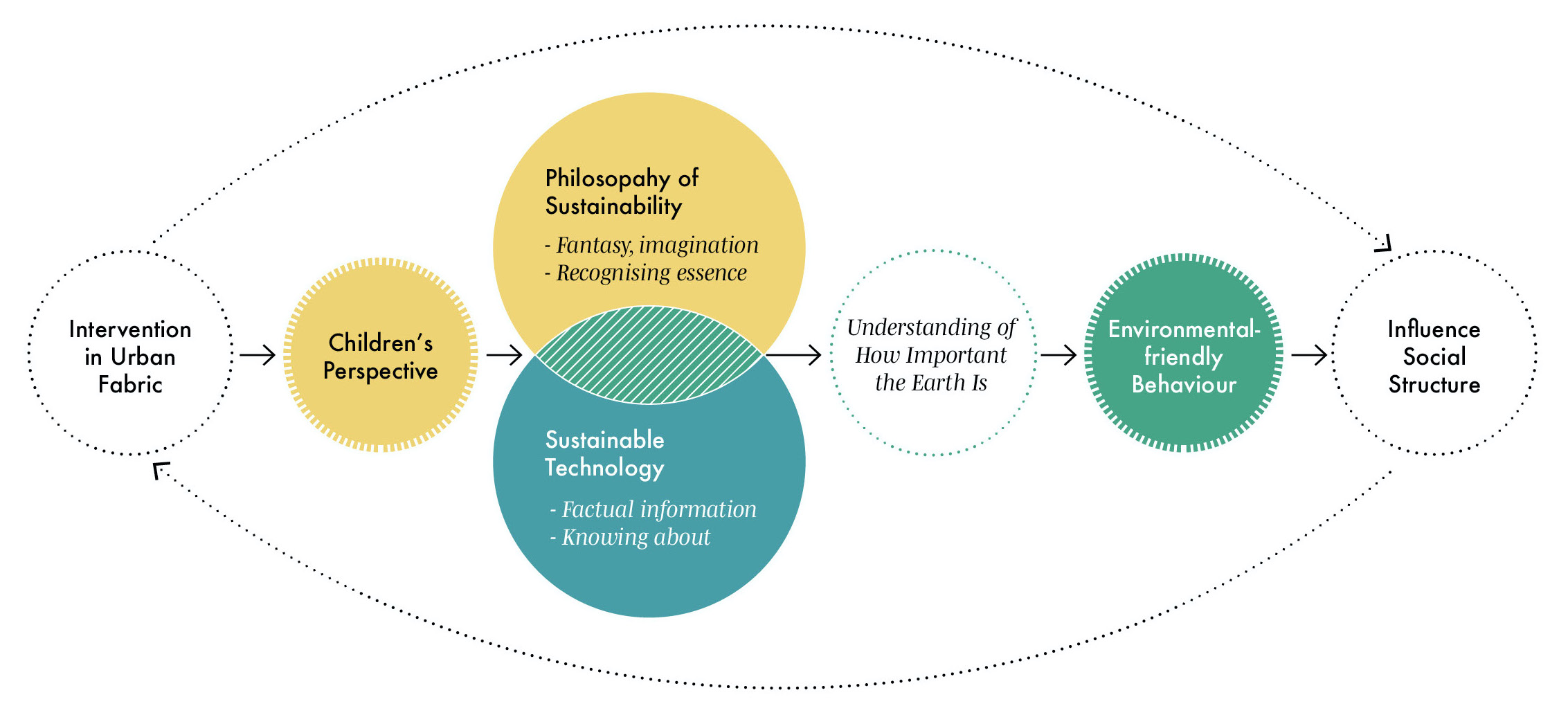Environmental Education
“Architects have a reciprocal responsibility to teach the public that the design of physical spaces matters, and that they can be read and translated by our minds into ideas for better understanding of our relationship with the environment.”
Taylor (2009, p. 31)

Environmental Psychology as Point of Departure
Transitioning to sustainable behaviour requires individuals to be aware of the economic crisis. Paradoxically, the Western world, in particular, continues to disproportionately destroy the environment compared to non-Western countries, despite the high-level of ecological awareness. Schneider (2019) concludes that one reason for the slow transition to a sustainable lifestyle is, that harmful behaviour interrelates with external factors, such as spatial and infrastructural aspects. It is here that environmental psychology comes into play.

Built Interventions as Pedagogical Interface
According to the theory of environmental psychology, a high level of environmental awareness leads to environmentally friendly behaviour (Schneider, 2019). Apart from personal measures, it requires structural measures which focus on architecture and urban planning to encourage environmental behaviour. Schneider (2019) argues that “interventions in the built environment can impact the social structure, and vice versa, changes to social structures can impact the built environment”. Interventions in the urban fabric that incorporate the child’s perspective and function as a pedagogical platform to increase environmental awareness can be a strategy with long-term impacts on a child’s personal development. Schneider (2019) states that these spatial interventions will be more successful the more specifically and personally they are designed. In this sense, children who are eager to explore and learn about their environment become the recipients “who are willing to receive and process the message” (Schneider, 2019).